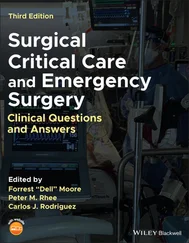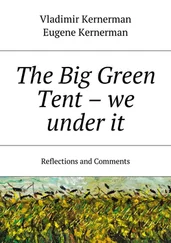Herbert Tiedemann - Babi Yar - Critical Questions and Comments
Здесь есть возможность читать онлайн «Herbert Tiedemann - Babi Yar - Critical Questions and Comments» весь текст электронной книги совершенно бесплатно (целиком полную версию без сокращений). В некоторых случаях можно слушать аудио, скачать через торрент в формате fb2 и присутствует краткое содержание. Жанр: История, на английском языке. Описание произведения, (предисловие) а так же отзывы посетителей доступны на портале библиотеки ЛибКат.
- Название:Babi Yar: Critical Questions and Comments
- Автор:
- Жанр:
- Год:неизвестен
- ISBN:нет данных
- Рейтинг книги:4 / 5. Голосов: 1
-
Избранное:Добавить в избранное
- Отзывы:
-
Ваша оценка:
- 80
- 1
- 2
- 3
- 4
- 5
Babi Yar: Critical Questions and Comments: краткое содержание, описание и аннотация
Предлагаем к чтению аннотацию, описание, краткое содержание или предисловие (зависит от того, что написал сам автор книги «Babi Yar: Critical Questions and Comments»). Если вы не нашли необходимую информацию о книге — напишите в комментариях, мы постараемся отыскать её.
Babi Yar: Critical Questions and Comments — читать онлайн бесплатно полную книгу (весь текст) целиком
Ниже представлен текст книги, разбитый по страницам. Система сохранения места последней прочитанной страницы, позволяет с удобством читать онлайн бесплатно книгу «Babi Yar: Critical Questions and Comments», без необходимости каждый раз заново искать на чём Вы остановились. Поставьте закладку, и сможете в любой момент перейти на страницу, на которой закончили чтение.
Интервал:
Закладка:
• The gradient of the pile of bodies soon becomes problematic. The executed victims must be moved off. Imagine, if you will, how long it would take two persons to extract one body from the bloody pile (which does not offer a very stable surface to stand on), to move it many dozens of yards on average, to deposit it and then to return to the pile of corpses. The place had to be cleared prior to new executions, and then to be manned. Added to this is the bringing-in of the earth and the covering of the mass graves with that earth. Why are there no witnesses for any of this either? Why do the air photos not show any traces of all this?
• Small children were thrown in alive. Were they sorted out first? Or did the executioners shoot past them? Was the shooting interrupted for this horrible activity? Where was the cable factory from where Orlow was able to observe all this in a few minutes?
6. According to Orlow,[13] other witnesses said that Germans "dashed the little ones against the rock".
Anyone who reads the Bible attentively will find that Holocaust tales are nothing new to the Jews (Genesis 6, Genesis 19:24, Exodus 11, Joshua 6, Matthew 2:16). Furthermore, pious people in particular draw inspiration from scripture. Psalms 137:9:
"Happy shall he be, that taketh and dasheth thy little ones against the stones."
7. Tamara Mikhasev:[7],[13],[32]
"[...] a young Russian woman whose Jewish husband was a Commander in the Red Army [...] left the place of execution with an ethnic German who was married to a Jewish woman. [...] This Russified German picked up the boy [his son] again, kissed his eyes and said farewell to his wife and mother-in-law."
• So a young Russian woman and an ethnic German were admitted as spectators at the execution site, to witness the top-secret mass execution of the Jews?
• Mikhasev embellishes her story with the barking of many dogs, and with dance melodies blaring from loudspeakers to drown out the screams of the victims.[33]
8. The Jewess Nesya Elgort tells us:[7],[13],[34]
"With her little son [she] miraculously escaped [...] untouched by the bullets [...] [from] under a heap of warm bloody bodies [...] hundreds and thousands of bodies piled on top of each other.
[...] It is now difficult for me to understand how I got out of that ravine of death, but I crawled out, driven by an instinct for self-preservation."
• Neither Nesya Elgort nor her little son was hit by a bullet! How did she manage to crawl out - with her child! - from beneath an enormous pile of bodies? Even with optimum positioning - which is more than unlikely, given the circumstances - the bodies would ultimately have weighted down the thoraces of mother and son to the point where breathing became impossible. One must also ask whether she or the child would not have been harmed by the impact of a body falling down on them, even from as little as 6 to 10 ft. above?
• She escaped unnoticed from the ravine. Were there no guards?
• Why were only women able to escape, but not a single one of the men, who in this case would have been physically better qualified?
9. The Jewess Yelena Borodansky-Knysh arrived at Babi Yar[7],[13],[35]
"[...] [when] it was already dark. [...] They took our clothing [...] and led us about fifty meters away, where they took our documents, money, rings, ear-rings. They wanted to remove the gold teeth of one old man, and he tried to resist.
[...] At about midnight the command was given in German for us to line up. [...] A second later bodies started falling on me. [...] We were sandwiched between bodies. [...] A German soldier was checking with a bayonet to make sure no one was still alive. By chance he was standing on me, so the bayonet blow passed me.
[...] I freed myself, got up, and took my unconscious daughter in my arms. I walked along ravines. [...] Crawling over ravines, I made my way to the village of Babi Yar."
She also provides this sideline story from the place of horror:[36]
"I'll never forget one girl, Sara; she was about fifteen years old. I can't describe how beautiful she was. Her mother was [...] killed with a rifle butt [...]. Five or six Germans stripped [the girl] naked, but I didn't see what happened after that. I didn't see."
• Why did this witness not arrive at Babi Yar until after dark? On what day, anyway? Many witnesses would have noticed the great crowd of victims-to-be between the time of their morning gathering at the street corner and their much later arrival at the undressing-place. Where are all these witnesses?
• The Jews allegedly had to report on the morning of September 29. But the murder took place not only on the 29th, but on September 30 as well. Wiehn[37] even claims that "the death march lasted three days and three nights." Where did the tens of thousands spend the night (or nights)?
• According to this version, the victims were first stripped naked and then, about 50 meters away, relieved of documents, money and jewelry. Was the procedure changed every few minutes?! Why has no other witness mentioned that the victims' teeth were checked? How much time would that have taken?
• Did the Kyiv Jews understand orders given in German?
• How can the German soldier have stood on Yelena Knysh if she was covered by bodies? How much time would it take to climb over mountains of bodies in order to kill anyone still living with a bayonet? Were victims not buried alive after all?
• Where exactly is the village of Babi Yar??? How likely is the story of the girl Sara's forcible stripping by five or six Germans, perhaps even within the range of machine gun scatter?
10. One single eyewitness was permitted (or ordered) by the Soviets to testify abroad. In 1968 Dina Pronitscheva testified in Darmstadt in the trial of 11 members of Einsatzkommando 4a. The case files are kept under lock and key!
Philip Shabecoff, reporter for the New York Times, wrote:[38]
"When the shooting stopped, the walls of the ravine were dynamited and the rubble was shovelled over the bodies of the men, women and children who lay in it. Some were still alive when buried."
What A. Kuznetsov learned from Pronitscheva and incorporated into his novel Babi Yar[39] does not agree with other testimony, for example:
"[...] machine-gunning of the Jews by German soldiers across the width of the Babi Yar Ravine throughout the night, half in darkness, illuminated by a small bonfire."
But the matter becomes even more confusing when one reads Dina Pronitscheva's account in Wiehn's opus[40]. Significant differences in her recorded statement at the Darmstadt Trial are added in parentheses, with the note S:
"On September 28, 1941, an order from the German authorities was posted throughout the city [...] about 8 o'clock in the morning [S: at 8 o'clock] near Djechtjarewska and Melnik Streets [S: Djachterowskaja and Melnikow] [...] my parents and my sister went to the meeting place [...] [S: It was very hot.] I accompanied them and then intended to return to my family [...] Large groups of people. [...] They were accompanied by Ukrainians, Russians, and citizens of other nationalities [...]. The streets [...] leading to the cemetery area were totally overcrowded with people. As we neared the gathering place we noticed the encirclement by German soldiers and officers [...] policemen, too. [S: Tank riders.] [S: We went up a hill:] [...] led us in groups of about 40-50 into a so-called 'Corridor' about 10 ft. wide which was formed by Germans standing close together on either side, with sticks, rubber truncheons and dogs [...]. Everyone was brutally beaten by the Germans. [S: Many fell down and were trampled to a thin pulp.] [At] the place at the end of the 'Corridor' [...] policemen stripped them [...] down to their underwear. [S: stark naked.] The beaten and stripped people were taken in groups to the ravine of Babi Yar [...]. They led us to a ledge over the ravine and began to shoot us with submachine guns. [S: machine guns.] [S: entirely different version: a German soldier offered her freedom in return for sex. She claimed to be a Russian, proved it by means of an employment book and union card, was then sent up a hill and not driven into the ravine with others until evening, on the orders of a German officer.] [...] when it was my turn I threw myself into the ravine alive [S: jumped into the pit.] [...]. Here, too, Germans and policemen went around and shot or beat to death anyone who was still alive [...]. One of the policemen or Germans turned me over with his foot, [...] stepped on my hand and my breast [S: he beat me] [...]. Then they began to [...] cover the bodies with soil and sand. [S: I remained lying under the soil.] I couldn't breathe anymore, freed myself of the earth with one hand [S: my right hand, on which the soldier stood, gave me trouble] and crawled to the edge of the ravine [...]. On the second day I saw the Germans chase an old woman and a boy of about 5 or 6 years, who had fled from the ravine. The old woman was shot, they stabbed the boy with a knife. About 30 ft. away from this spot seven Germans came along, leading two young girls. They raped them there and then stabbed them to death."
Читать дальшеИнтервал:
Закладка:
Похожие книги на «Babi Yar: Critical Questions and Comments»
Представляем Вашему вниманию похожие книги на «Babi Yar: Critical Questions and Comments» списком для выбора. Мы отобрали схожую по названию и смыслу литературу в надежде предоставить читателям больше вариантов отыскать новые, интересные, ещё непрочитанные произведения.
Обсуждение, отзывы о книге «Babi Yar: Critical Questions and Comments» и просто собственные мнения читателей. Оставьте ваши комментарии, напишите, что Вы думаете о произведении, его смысле или главных героях. Укажите что конкретно понравилось, а что нет, и почему Вы так считаете.










